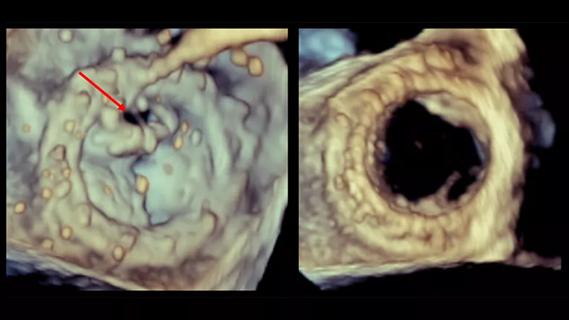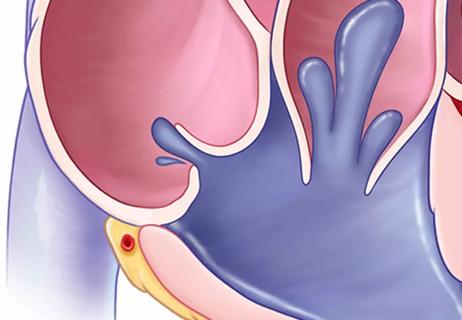Investigators urge caution until more data accrue

Use of direct oral anticoagulants (DOACs) following surgical heart valve replacement is not insignificant in the United States even though satisfactory safety data on DOACs in this setting are lacking. So finds a retrospective national cohort study published by Cleveland Clinic researchers in JAMA Network Open [Epub 8 March 2021].
Cleveland Clinic is a non-profit academic medical center. Advertising on our site helps support our mission. We do not endorse non-Cleveland Clinic products or services. Policy
“DOAC use is contraindicated in patients with mechanical heart valves, and it remains off-label in those with bioprosthetic heart valves,” says the study’s lead and corresponding author, Ankur Kalra, MD, Medical Director of Clinical Research for Regional Cardiovascular Medicine at Cleveland Clinic. “Despite this lack of FDA labeling and an absence of guideline support, our study found DOAC use among more than 1% of patients with mechanical valves and steadily increasing use among patients with bioprosthetic valves, at about 7% by study’s end.”
He and his co-investigators extracted data from the Society of Thoracic Surgeons Adult Cardiac Surgery Database on all patients who underwent surgical aortic valve replacement (AVR) or mitral valve replacement (MVR) with either mechanical or bioprosthetic heart valves from July 2014 through June 2017. They set out to determine the prevalence of DOAC use at hospital discharge among these patients and compare pre- and postoperative profiles between patients discharged on DOACs and those discharged on warfarin.
Among recipients of mechanical valves across the entire cohort, those discharged on a DOAC alone (no warfarin) were older than those discharged on warfarin alone (no DOAC) (mean of 60.8 vs. 53 years; P < 0.001) and had a significantly lower mean INR. They were also significantly more likely than warfarin recipients to have preoperative hypertension, dyslipidemia, peripheral artery disease and heparin-induced thrombocytopenia (HIT) antibody. Preoperative use of factor Xa inhibitors was also significantly higher among those discharged on a DOAC than those discharged on warfarin. Additionally, postoperative (but pre-discharge) events were significantly more frequent in those discharged on DOACs than those discharged on warfarin, including atrial fibrillation/flutter, reoperation for bleeding and venous thromboembolism.
Among recipients of bioprosthetic valves across the cohort, those discharged on a DOAC alone (no warfarin) were significantly more likely to have preoperative arrhythmias and HIT antibody than those discharged on warfarin alone (no DOAC), but they were significantly less likely to be on dialysis. Preoperative use of DOACs was higher in the DOAC group. Rates of postoperative (but pre-discharge) events were split between the groups, with renal failure and reoperation for bleeding higher among those discharged on warfarin but atrial fibrillation/flutter and venous thromboembolism higher in those discharged on DOACs.
The researchers note that while their analysis is limited by a lack of follow-up data to compare outcomes according to the type of anticoagulant received, it calls for circumspection around the off-label use of DOACs in patients with newly implanted prosthetic valves.
“These findings call for a pause and caution from clinicians taking care of these patients,” says co-investigator Samir Kapadia, MD, Chair of Cardiovascular Medicine at Cleveland Clinic. “We ought to wait until more data accrue regarding the efficacy and safety of DOACs in these patient subsets.”

Cleveland Clinic series supports re-repair as a favored option regardless of failure timing

Large retrospective study supports its addition to BAV repair toolbox at expert centers

Provides option for patients previously deemed anatomically unsuitable

A call for surgical guidelines to adopt sex-specific thresholds of LV size and function

While mortality was unaffected, later surgery was associated with more reoperations

Many young patients can avoid lifelong anticoagulation with a valve-sparing approach

And substudy reveals good outcomes with PASCAL system in patients with complex mitral valve anatomy

Investigators conclude that improved self-reports go beyond possible placebo effect for severe TR